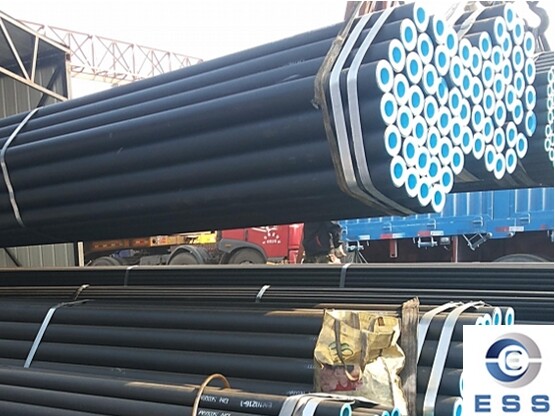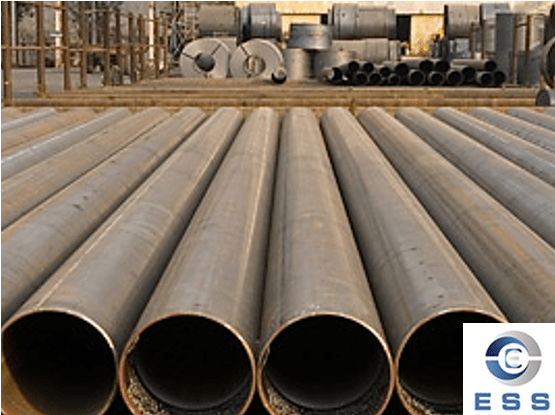
As a type of carbon
steel pipe, mild
steel pipe is widely used in petroleum, chemical industry, construction and
other fields due to its good mechanical properties and economy. However, during
production and use, mild steel pipes often have some quality defects and
surface problems, which affect their service life and safety. The following is
an analysis from three aspects: welding defects, overall quality problems and
surface defects, and the corresponding treatment methods are discussed.
Welding defects
Welding defects are common types of
defects in mild steel pipes, including pores, inclusions, unfused, cracks,
uneven structure and other problems.
1. Porosity and inclusions
During the welding process, gas or
impurities are easily left in the weld, forming pores and inclusions, resulting
in local strength reduction.
2. Unfused and cracks
Due to improper control of welding heat
input or operating errors, incomplete welding (unfused) or cracks during
cooling may occur.
3. Uneven structure
The performance of the welding area and the
parent material is different during the heat treatment process, which may form
hard and brittle areas or soft areas, affecting the overall mechanical
properties.
These problems are usually caused by
improper welding process, poor quality of raw materials, irregular operation,
etc. How to solve them?
1. For problems such as pores and
inclusions
Effective welding processes and operating
methods should be adopted, welding parameters should be strictly controlled,
and appropriate preheating and post-heat treatment measures should be adopted.
At the same time, ensure that the quality of raw materials meets the standards
and reduce defects caused by impurities.
2. For problems such as cracks
Detection and repair should be carried out
in time, and non-destructive testing methods such as ultrasound and X-rays
should be used to conduct a comprehensive inspection of the weld to promptly
detect and repair problems such as cracks and lack of fusion to avoid affecting
production.
Quality problems
The quality problems of mild steel pipes
are also common types of defects, mainly manifested in inaccurate dimensions,
substandard chemical composition, poor mechanical properties, etc.
1. Inaccurate dimensions
During the production process, due to
inadequate process control or insufficient equipment accuracy, large deviations
in pipe dimensions may occur.
2. Chemical composition does not meet the
standard
The performance of mild steel pipes is
closely related to the chemical composition. Unstable composition will directly
affect the mechanical properties of the pipe.
3. Poor mechanical properties
Including tensile strength, insufficient
toughness and other problems, which may occur due to uneven heat treatment or
lax process control during production.
Quality problems are usually caused by improper
selection of raw materials, operational errors in the production process and
other factors. How to solve them?
For the quality problems of mild steel pipes,
prevention and control should be carried out by selecting suppliers with stable
quality, strictly controlling the production links and using appropriate
detection and testing methods.
When quality problems occur, measures
should be taken as soon as possible to repair and rectify them, formulate and
implement detailed production standards and operating instructions, strengthen
quality monitoring of each link, and ensure that the products meet the standard
requirements. Timely repair and calibrate equipment to ensure that all
parameters in the production process meet the requirements.
Surface defects
Surface defects are another common
problem of mild steel pipes, mainly including rust, scratches, oxidation and
other problems.
1. Rust and oxidation
During the production, transportation or
storage process, due to improper protective measures, the surface of the steel
pipe is prone to rust and oxidation, affecting the appearance and corrosion
resistance.
2. Scratches
During the processing or handling process,
scratches may occur on the surface of the steel pipe, which will become the
starting point of corrosion.
Surface defects are usually caused by
improper storage, improper operation during the production process, etc. How to
solve them?
1. For surface defects of mild steel pipes
During the production process, attention
should be paid to strengthening cleaning and anti-corrosion treatment, and
coating, pickling and other technologies should be used to improve surface
corrosion resistance and avoid rust and other problems.
2. For scratches, oxidation and other
problems
Repairs and adjustments should be made in
time to ensure the smoothness and flatness of the pipeline surface. Ensure that
the storage environment is dry and ventilated, and take appropriate protective
measures. Train operators to avoid mechanical damage during production and
transportation.
Summary
The above are the common defect types and
treatment methods of mild steel pipes. I hope it can help everyone better
understand the quality requirements and treatment methods of mild steel pipe
products. During the production process, we should pay attention to testing and
quality control to ensure that product quality meets national standards,
thereby enhancing customer trust and recognition and gaining market competitive
advantages.
Read more: Difference between mild steel pipe and carbon steel pipe or How long can mild steel pipes last?













 Eastern Steel Manufacturing Co.,Ltd not only improve product production and sales services, but also provide additional value-added services. As long as you need, we can complete your specific needs together.
Eastern Steel Manufacturing Co.,Ltd not only improve product production and sales services, but also provide additional value-added services. As long as you need, we can complete your specific needs together.










